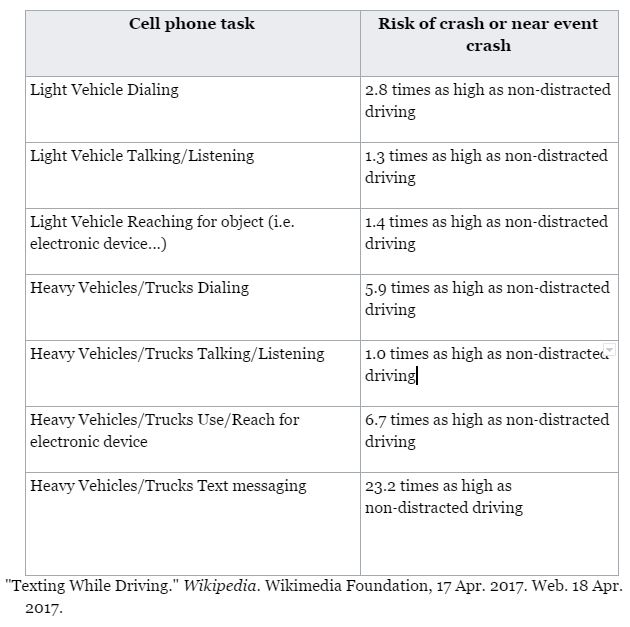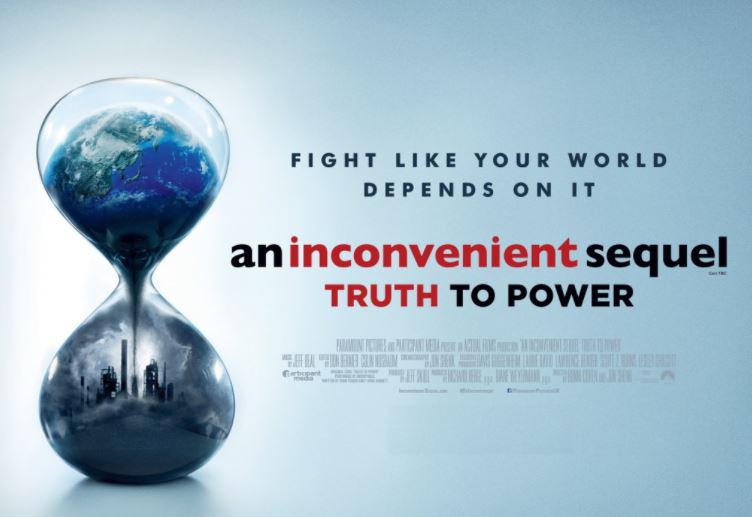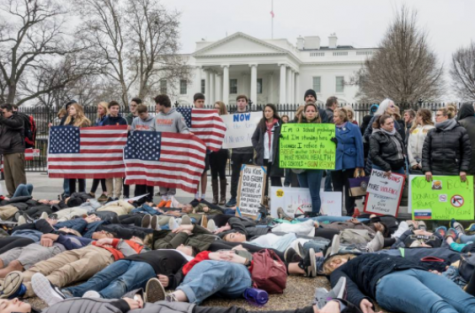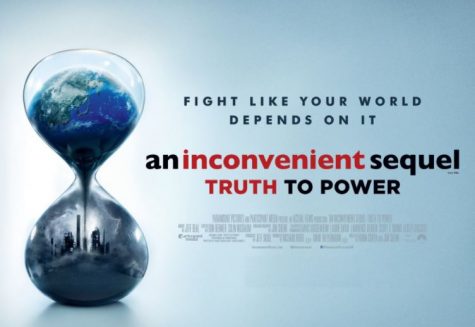Texting While Driving
June 2, 2017
Every day millions of people all over the world use their cell phones to text or call, but have you ever thought about how much these devices actually distract you? Over the last ten years, cell phone technology has had an incredible increase. With the increase of technology, cell phones have become more common in our everyday lives, including texting while driving. Although cell phones can help us stay in contact with our friends and family, they can also be the cause of many harmful accidents. I believe that texting while driving should be illegal in all states in the US because of the high risk of causing an accident.
Sending a text while behind the wheel poses an even greater risk of an accident than talking on the phone while driving (“Opposing Viewpoints”). Many studies have proven this point. A study by Car and Driver magazine in June 2009 shows that while sending a text, the driver traveled seventy feet past the baseline test. Being legally drunk the driver only traveled four feet beyond the baseline test, and reading an e-mail, the driver traveled thirty-six feet beyond the baseline test (“Texting”). Taking in this data, you can infer that texting while driving is one of if not the most dangerous action people do while driving. Virginia Tech Transportation Institute reported that texting while driving was the most dangerous of all cell phone activities (“Opposing Viewpoints”).
A report published by the National Highway Traffic Safety Administration says that 5,474 people were killed in the US from distracted driving accidents and 448,000 were injured in these accidents (“Opposing Viewpoints”). According to the survey done by the National Motor Vehicle Crash Causation Survey in 2008, eighteen percent of accidents were caused by driver distraction (“Opposing Viewpoints”). According to the graphic below while texting and driving the risk of a crash or near event crash is 23.2 times as high as non-distracted driving. The second highest risk of crash or near accident is reaching for an electronic device at 6.7 times higher than non-distracted driving. Still in twenty states there is no ban on texting while driving, and in just eight states and the District of Columbia have laws against the use of talking on a hand held phone. There is still yet to be a state to ban hands-free or blue-tooth cell phones (“Fumento”).
Surveys show that the majority of people are in favor of a ban on text messaging while driving, but also the large part of drivers say that they would like to continue to use their cell phones while behind the wheel (“Halsey”). If the majority of drivers support a ban then why do these drivers also say that they want to continue to use them? Some may think that they are quality drivers while using their cell phones and this could be a reason why many drivers want to continue to use them.
It must be clear that distracted driving is very dangerous but it seems as though drivers don’t care about the safety of themselves or others. In my opinion there is no reason why this issue could not be cracked down on and enforced more by the law. Texting while driving is an action that can not continue because of the so many risks that are being taken while doing it.
Works Cited
Fumento, Michael. “Texting and Driving Is More Risky than Driving Under the Influence.” Cell Phones and Driving, edited by Roman Espejo, Greenhaven Press, 2015. At Issue. Opposing Viewpoints in Context,
Halsey, Ashley. “Laws Against Texting While Driving Are Ineffective.” Distracted Driving, edited by Stefan Kiesbye, Greenhaven Press, 2012. At Issue. Opposing Viewpoints in Context,
Texting While Driving.” Opposing Viewpoints Online Collection, Gale, 2015. Opposing Viewpoints in Context
“Texting While Driving.” Wikipedia. Wikimedia Foundation, 17 Apr. 2017. Web. 18 Apr. 2017.
























































